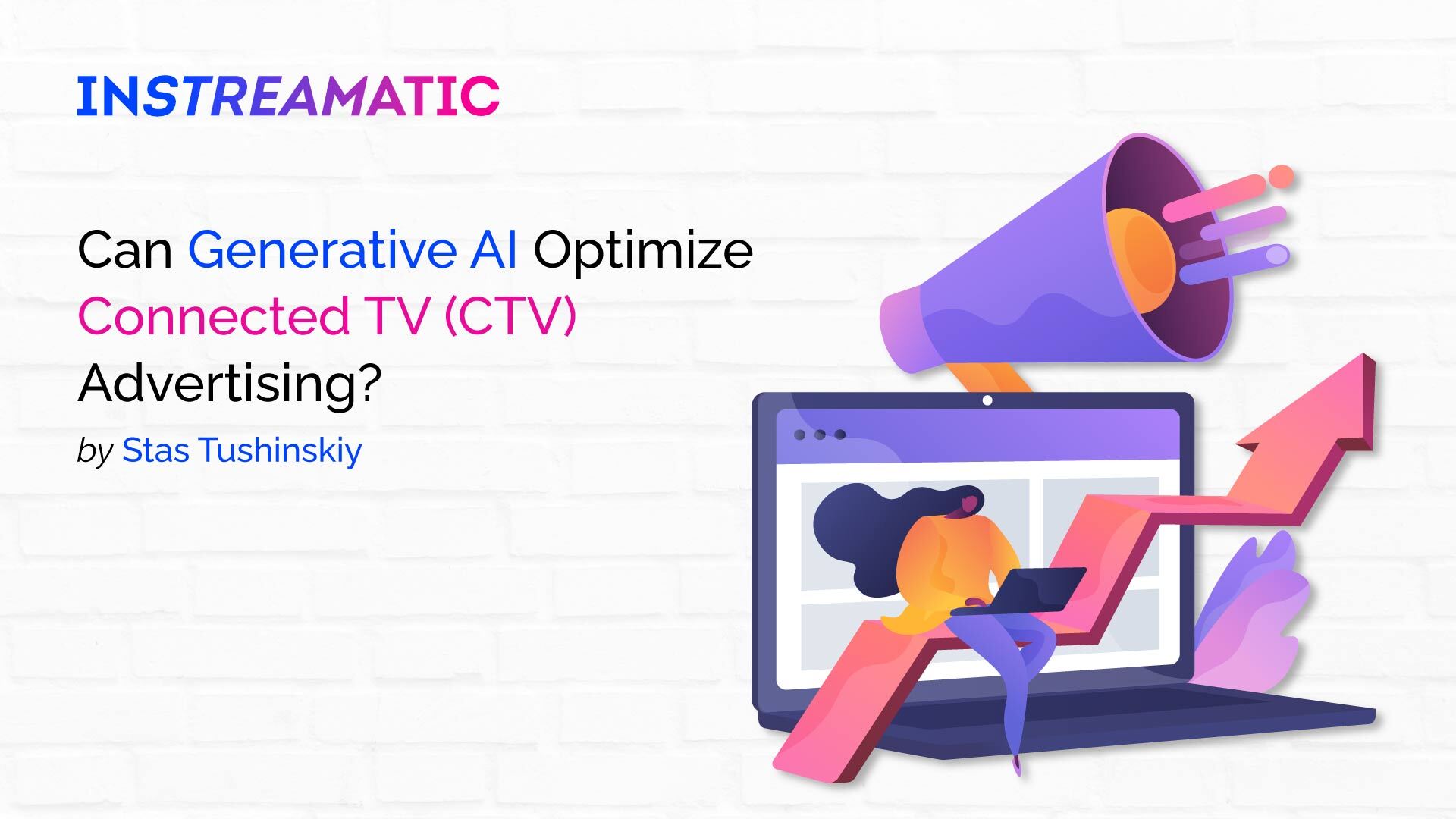

advertising artificial intelligence
Can Generative AI Optimize Connected TV (CTV) Advertising?
Can Generative AI Optimize Connected TV (CTV) Advertising?
Connected TV (CTV) is becoming an increasingly strategic advertising vehicle for brands as generative AI helps CTV campaigns overcome some of its initial limitations around automation, scale, and ad personalization at scale. The challenge brands are up against here is clear: CTV campaigns — serving ads that appear to viewers of digital streaming content during ad breaks — need to win audience engagement by capturing the attention of viewers who have largely trained themselves to tune out commercials.
Generative AI offers a new approach to keeping those eyeballs on the screen. With ads that can speak to an individual viewer’s unique context, brands can grab their attention with voiceover that includes specifics of that individual’s location, viewing activities, and calls-to-action shaped just for them. Personalized and contextual content would require all-but-impossible manual effort to produce and manage using traditional strategies. Generative AI solves this by introducing automation, allowing marketers to instantly generate content aligned with brand goals and creative guidelines.
Importantly, generative AI enables marketers to leverage ad versioning: creating many ad versions, analyzing their performance through unlimited A/B testing (or A/B/C/D, etc.), and determining the most effective combinations of creative content and targeted personalization elements. Marketers can then automatically orchestrate that content and optimize media buying and ad delivery across their campaigns. Paired with the right creative minds, the result is perfectly-tuned brand messaging, ads optimized at scale across the full cycle of their campaigns, and revenue attributable to ads (ROAS) that shoots up while the time and costs of waging campaigns go down.
Realistic AI voice synthesis streamlines ad campaign costs and execution
At the core of generative AI-powered CTV ads is an ability for marketers to use voices that are realistically-human but fully synthesized. Marketers no longer need to work through sound studios and painstakingly record a limited number of ad variations over the course of months. Instead, AI itself can turn ad creative into fully rendered and convincingly voiced CTV ads, nearly instantly.
AI can then extrapolate the audio from a single finished CTV ad to create thousands of variations in just minutes. Those variations can speak to the relevant context of each individual ad viewer, address their personalized needs, and enable myriad tests to hone the effectiveness of creative messaging. Equipped with this means of hyper-scale creative production, marketers can even deliver refreshed creative content on a daily basis, ensuring that CTV ads reaching viewers aren’t stale or repetitive. Generative AI-enabled ad delivery also makes it possible to track and build on past viewer interactions across ads, taking the viewer on an intentional personalized journey throughout a campaign.
With AI, there’s no longer any need for multiple takes for voiced CTV ads, nor worries about sound quality or other production issues. Marketers simply tell the generative AI their parameters in natural language, and create unlimited precision-targeted viewer-ready ads, at a fraction of traditional expenses.
Contextualization has a transformative impact on engagement
Hyper-personalized ads that speak to individuals in their context are vastly more effective at capturing engagement — benefitting brands and driving ROI. Until the arrival of generative AI, however, contextual ad campaigns have also been that much more costly and difficult to execute, given the layers of complexity involved.
The automated efficiency of AI-powered CTV ads now enables brands to include meaningful contextual details in generated creative. For example, ads can mention the viewer’s city location, what time of day it is, current weather conditions, the content streaming platform in use, localized promotions and codes, and even the nearest storefront where the brand’s products or offers are available. That specificity in speaking to viewers with precise knowledge and highly relevant calls to action gives brands the power to breakthrough and capture attention, whereas a conventional ad would simply go ignored.
Deliver ads that pass the A/B test
Arguably the most promising attribute of generative AI-powered CTV ads is their ability to automatically learn and improve, at scale. In the hands of AI, unlimited and continuous A/B testing replaces any guessing games with pure data-driven marketing, optimizing creative possibilities from the first day of a campaign to the last. The impact of these ad versioning and testing processes—in which AI rapidly iterates generations of fully voiced advertising to perfect the appeal and effectiveness of brand offers — has potential for a sea change in the marketing industry. At the same time, this automation empowers marketers themselves to bring more creative ideas to the ad market faster than ever, and oversee quality control as AI optimizes their efforts.
Lead the change
Brand marketers who have dreamed of achieving hyper-scale contextual ad campaigns—but lacked the massive budgets or management capabilities required — can now reach for their wildest dreams with generative AI. Transformative ROI opportunities, unprecedented personalization, and closer brand relationships are there for the taking, and will belong to those brands that harness this technology first and best.

Stas Tushinskiy
Stas Tushinskiy is the CEO of Instreamatic, an AI-driven ad creation, delivery, and optimization company. Prior to Instreamatic, Stas built a leading digital audio advertising sales house in Europe.




